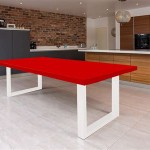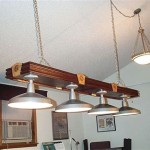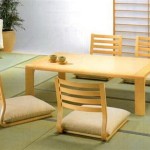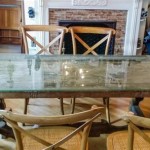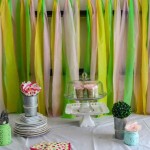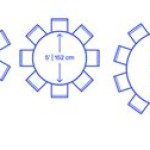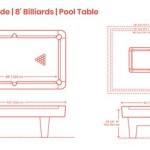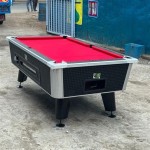The Enduring Allure of Antique Dressing Table Round Mirrors
Antique dressing tables, often adorned with round mirrors, represent a significant segment of the antique furniture market. These pieces, more than mere functional items, are historical artifacts reflecting evolving tastes in interior design, craftsmanship, and societal ideals of beauty. The round mirror, in particular, offers a distinctive aesthetic that sets it apart from its square or rectangular counterparts, contributing significantly to the character and value of an antique dressing table.
The historical context of these dressing tables is crucial to understanding their appeal. They emerged as essential furniture pieces during periods when personal grooming and presentation became increasingly important. The design, materials, and decorative details of antique dressing tables often reflect the era in which they were created, offering insights into the social and economic conditions of the time. A dressing table from the Victorian era, for example, might feature elaborate carvings, ornate hardware, and a heavily framed round mirror, indicative of the Victorian penchant for opulent detail. Conversely, a dressing table from the Art Deco period might display cleaner lines, geometric shapes, and a more streamlined round mirror, reflecting the modernist aesthetic of the 1920s and 30s.
The round mirror, as a central component of the dressing table, plays a key role in defining its style and function. Its circular shape softens the overall appearance of the piece, adding a sense of elegance and grace. The mirror's primary purpose, of course, is to provide a reflection for grooming and applying makeup. However, its presence on the dressing table also serves a decorative function, reflecting light and creating a sense of spaciousness in the room. The size, framing, and tilt mechanism of the round mirror are all factors that contribute to its overall aesthetic and practical value.
The Evolution of Style and Design
The design of antique dressing tables with round mirrors has undergone significant evolution over the centuries. Early examples, dating from the 18th and 19th centuries, often featured elaborate designs influenced by European styles such as Rococo, Neoclassical, and Empire. These dressing tables were typically crafted from high-quality hardwoods like mahogany, walnut, and rosewood, and were adorned with intricate carvings, inlays, and gilded accents. The round mirrors were often surrounded by ornate frames, reflecting the opulence and grandeur of the period.
As the 20th century progressed, the design of dressing tables shifted towards simpler, more functional forms. The Art Nouveau and Art Deco movements brought about a departure from traditional styles, emphasizing clean lines, geometric shapes, and the use of new materials like chrome and glass. Dressing tables from this era often featured streamlined round mirrors with minimal ornamentation, reflecting the modernist aesthetic of the time. The Mid-Century Modern period further simplified the design of dressing tables, with a focus on functionality and practicality. These dressing tables often featured clean lines, minimalist details, and the use of materials like teak and formica. The round mirrors were typically smaller and less ornate, reflecting the emphasis on simplicity and functionality.
The evolution of the round mirror itself is also noteworthy. Early mirrors were often made using a process called “verre églomisé,” which involved applying gold leaf to the back of the glass and then etching designs into the gold. This technique created a unique and decorative effect. Later mirrors used mercury amalgam as the reflective surface. The quality of the glass used in the mirror also improved over time, resulting in clearer and more accurate reflections. The framing of the round mirror also evolved, from elaborate carved wood frames to simpler metal or plastic frames.
The tilt mechanism of the round mirror is another important aspect of its design. Early dressing tables often featured simple tilt mechanisms consisting of pegs or screws that allowed the mirror to be adjusted to different angles. Later dressing tables incorporated more sophisticated mechanisms, such as ball-and-socket joints or adjustable hinges, allowing for a wider range of adjustment. The tilt mechanism is crucial for ensuring that the mirror is positioned at the optimal angle for grooming and applying makeup.
Materials and Craftsmanship
The materials used in the construction of antique dressing tables with round mirrors significantly impact their value and durability. High-quality hardwoods like mahogany, walnut, and rosewood were commonly used in the construction of early dressing tables. These woods are known for their strength, durability, and beautiful grain patterns. The choice of wood often reflected the region where the dressing table was made. For example, mahogany was commonly used in dressing tables made in England and America, while walnut was more common in dressing tables made in France and Italy.
The craftsmanship of antique dressing tables is another important factor to consider. Skilled cabinetmakers and artisans meticulously crafted these pieces, using traditional techniques such as dovetailing, mortise-and-tenon joinery, and hand-carving. The quality of the craftsmanship is evident in the details of the piece, such as the smoothness of the finish, the precision of the joinery, and the intricacy of the carvings. Well-crafted antique dressing tables are built to last and can withstand the test of time.
The mirror itself is also made of glass, and various methods have been used to coat the back of the glass with a reflective material. Early mirrors used a mercury amalgam, which provided a good reflection but was also toxic. Later mirrors used silver or aluminum, which are safer and more durable. The quality of the glass used in the mirror is also important. High-quality glass is clear and free of imperfections, while lower-quality glass may be cloudy or distorted.
The hardware used on antique dressing tables, such as knobs, pulls, and hinges, can also provide clues about their age and origin. Early dressing tables often featured handmade hardware made from brass, iron, or silver. Later dressing tables used mass-produced hardware made from cheaper materials like pot metal or plastic. The style of the hardware can also reflect the era in which the dressing table was made. For example, Victorian dressing tables often featured ornate brass hardware, while Art Deco dressing tables featured streamlined chrome hardware.
Identifying and Valuing Antique Dressing Tables
Identifying and valuing antique dressing tables with round mirrors requires a keen eye and a thorough understanding of their historical context, materials, and craftsmanship. Several factors influence the value of these pieces, including their age, condition, rarity, and provenance. The age of the dressing table is a primary determinant of its value. Older dressing tables are generally more valuable than newer ones, especially if they are well-preserved and in good condition.
The condition of the dressing table is also crucial. Pieces in original condition, with minimal repairs or alterations, are typically more valuable than those that have been heavily restored or refinished. However, some repairs may be necessary to stabilize the piece and prevent further damage. It is important to distinguish between sympathetic restoration, which aims to preserve the original character of the piece, and unsympathetic restoration, which can detract from its value.
Rarity is another important factor. Dressing tables with unique designs, unusual materials, or significant historical associations are generally more valuable than common or mass-produced pieces. The provenance of the dressing table, or its documented history of ownership, can also contribute to its value. Dressing tables with a well-documented provenance, especially if they were owned by famous or influential individuals, are highly sought after by collectors.
Examining the details of the dressing table can help determine its age and origin. Look for clues such as the type of wood used, the style of the hardware, the joinery techniques, and the presence of any maker's marks or labels. Researching the history of furniture styles and manufacturers can also help in identifying and valuing antique dressing tables.
The round mirror itself should also be carefully examined. Check for signs of age, such as foxing or silvering, which are common in older mirrors. Also, inspect the mirror for any cracks, chips, or other damage. The condition of the mirror can significantly impact the overall value of the dressing table.
Consulting with antique furniture experts and appraisers can be invaluable in determining the value of an antique dressing table. These professionals have the knowledge and experience to assess the authenticity, condition, and rarity of the piece, and can provide an accurate appraisal of its market value. They can also offer advice on the best way to care for and preserve antique dressing tables.

91 Best S About 1940s Living On Museums Art Deco Bedroom Furniture Vintage Sets

Vintage Dressing Table With Round Mirror And Glass Shelf

Round Mirror Dressing Table At Rs 16000 ड र स ग ट बल म रर फ In Ulhasnagar Id 13914237233

Vintage Antique Mahogany Dressing Table Vanity W Round Mirror Chest Of 4 Drawers Dresser Mid Century Modern Art Deco Industrial Pulls

Luxury Custom Antique Dressing Table With Round Mirror Black Vanity Classic Wood Carved Art Deco Tables 16800

Antique Victorian Quality Painted Satinwood Dressing Mirror In Table Mirrors

Dressing Table Oval Mirror Vintage Vanity Set Beauty Gift Bedroom Solid Wood Drawers Candleholders Round Carved Trumeau

Premium Photo Vintage Wooden Dressing Table Round Vanity Mirror Rattan Stool Tropical Tree In Pot Sunlight O

Antique Vanity Waterfall Dresser Dressing Table Round Mirror And Drawers Art Deco 1868 Auctionnia Com

Enchanting White Antique Vanity With Round Mirror And Bench Shabby Chic Dresser Furniture

